Selma to Montgomery: The March Towards Freedom
March 1965, marked a pivotal time for the American civil rights movement, when Martin Luther King led demonstrators to protest the discrimination in voting rights against black Americans in Alabama. The march was begun three times before the demonstrators were finally able to finish it.
The first march took place on March 7, 1965, when 600 demonstrators were attacked by state and local police with weapons and tear gas when they reached the Edmund Pettus Bridge, injuring 17 protesters in what came to be known as "Bloody Sunday."
It became national news when televisions around the country displayed images of marchers bloody and severely injured.
The second march, March 9, resulted in 2,500 protesters turning around after crossing the main bridge due to a restraining order that federal district court judge issued barring the march from taking place until he could hold additional hearings later in the week.
The third march started March 16, when the restraining order was lifted when a judge ruled in favor of the marchers, saying their first amendment, right to march in protest, could not be changed in Alabama. They started on March 21 and walked an average of 10 miles a day on their 54 mile trek..Us Soldiers, National Guard and many FBI members , watched and guarded as they took the 3 day march to Montgomery . On March 25, 25,000 people marched to the steps of the Alabama Capital building in Montgomery Alabama where King delivered the speech "How Long, Not Long."
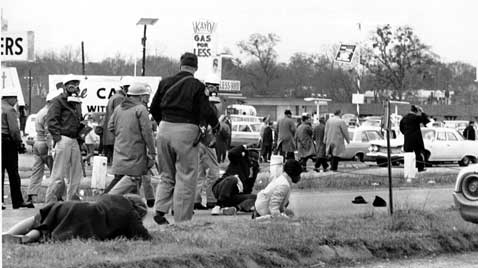
Civil rights demonstrators struggle on the ground as state troopers use violence to break up a march in Selma, Ala., on what is known as Bloody Sunday on March 7, 1965. The supporters of black voting rights organized a march from Selma to Montgomery to protest the killing of a demonstrator by a state trooper and to improve voter registration for blacks, who are discouraged to register. (AP Photo)
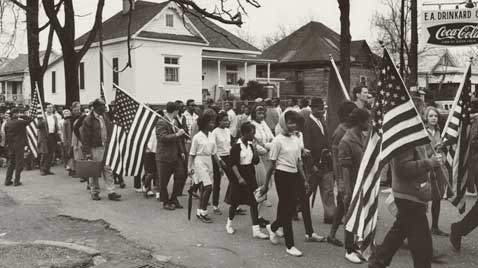
Participants, carrying American flags, marching in the civil rights march from Selma to Montgomery, Alabama, March 25, 1965. (Photo by Buyenlarge/Getty Images)

Civil rights leader Dr. Martin Luther King Jr. and his wife Coretta Scott King (center right, hand in hand) lead others during on the Selma to Montgomery marches held in support of voter rights, Alabama, late March 1965. Among those with them are Reverend Ralph Abernathy (1926 - 1990) (second from left, smiling), and Pulitzer-Prize winning political scientist and diplomat Ralph Bunche (1904 - 1971) (front row, in white short sleeved shirt). Bunche's wife, Ruth , holds Abernathy's arm. (Robert Abbott Sengstacke/Getty Images)
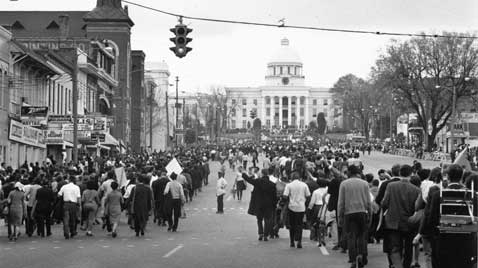
American civil rights demonstrators, led by Dr. Martin Luther King, approach the Capitol Building in Montgomery, Alabama, at the end of their march for black voting rights from Selma, Alabama. (William Lovelace/Express/Getty Images)
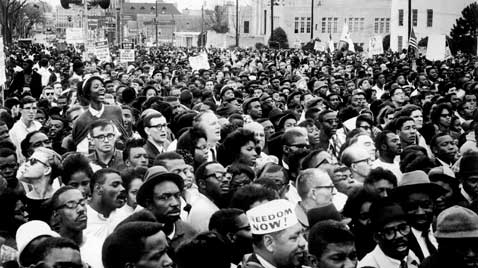
Civil rights demonstrators, led by Dr Martin Luther King (not pictured), arrive in Montgomery from Selma on March 26, 1965, in Alabama, on the third leg of the Selma to Montgomery marches. The Selma-to-Montgomery March for voting rights ended three weeks and represented the political and emotional peak of the modern civil rights movement. The first march took place on March 7, 1965 ("Bloody Sunday") when 600 civil rights marchers were attacked by state and local police. (AFP/Getty Images)
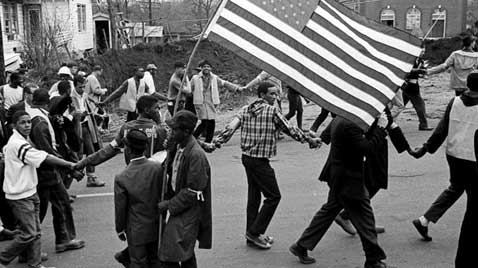
Marchers, hand in hand, walk past a fellow marcher waving an American flag, during the Selma to Montgomery march, held in support of voter rights, Alabama, late March 1965. (Robert Abbott Sengstacke/Getty Images)
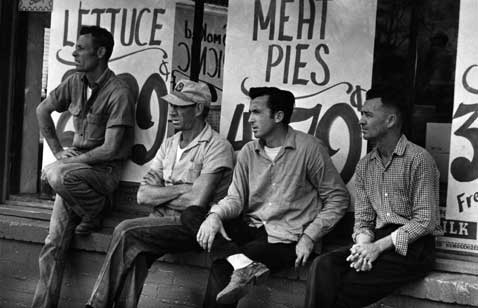
Four local men are seen watching the civil rights march from Selma, Ala., to the state capital in Montgomery, March 1965. (Photo by William Lovelace/Getty Images)
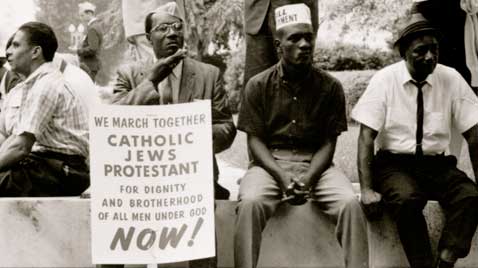
Marchers take a rest during the civil rights march from Selma to Montgomery, Alabama, march 1965. (Buyenlarge/Getty Images)
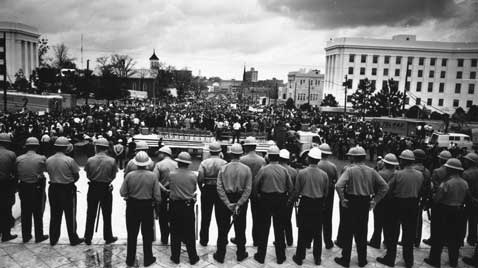
A line of policemen on duty during a black voting rights march in Montgomery, Ala. Dr Martin Luther King led the march from Selma, Ala., to the state capital in Montgomery. (William Lovelace/Express/Getty Images)
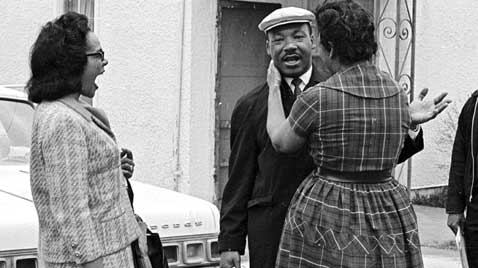
The Reverend Dr. Martin Luther King, Jr. is greeted happily by an unidentified friend and supporter, outside the home where he spent the night in Montgomery, Ala., before to the final day of the Selma to Montgomery march, late March, 1965. His wife, Coretta Scott King stands on the left. (Robert Abbott Sengstacke/Getty Images)

People on the roadside by Montgomery, Ala., after the civil rights march from Selma. (Bob Fletcher/MPI/Getty Images)
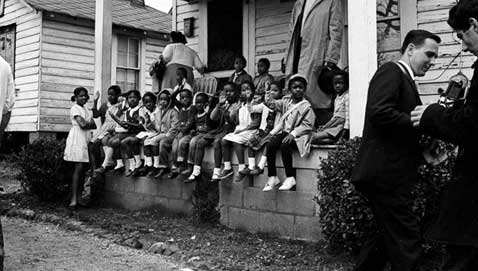
Young children, sitting on their front porch, wave to marchers walking past their home, during the Selma to Montgomery marches held in support of voter rights, Alabama, late March 1965. (Robert Abbott Sengstacke/Getty Images)